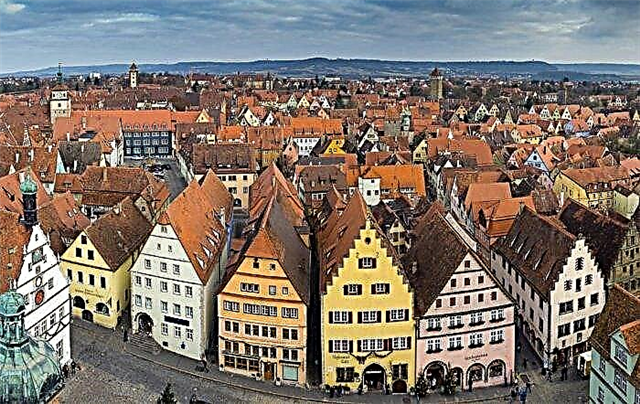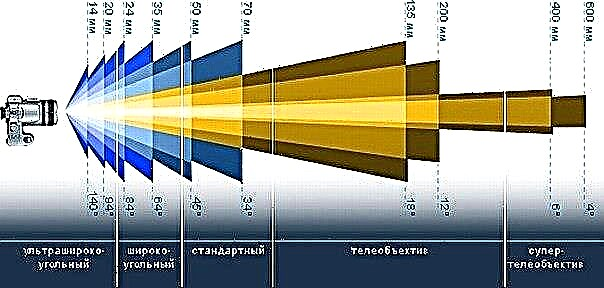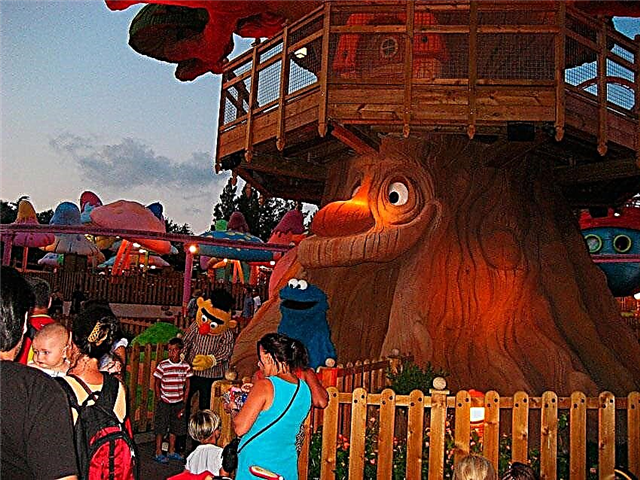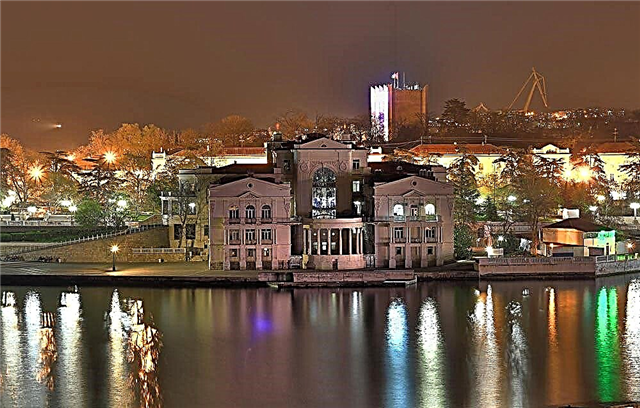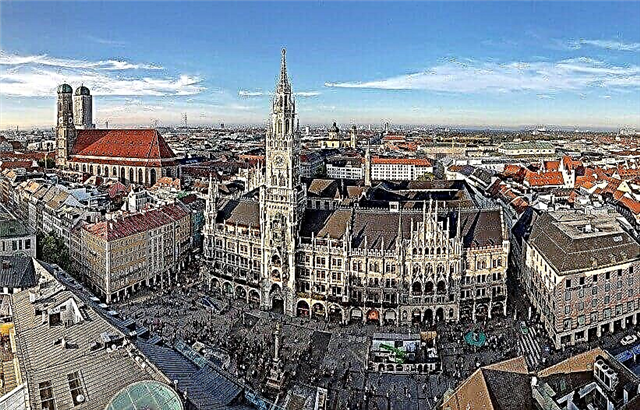Germany is often chosen as the destination for travel to Europe. Many cities of this country have an ancient and rich history, they are literally strewn with sights. Powerful castles, majestic cathedrals, graceful palaces adorn the streets and squares of Munich, Cologne and Dresden. In many places, old traditions are still relevant, residents dress in folk costumes and celebrate merry holidays. Today Germany is one of the safest, most interesting and most visited countries in Europe.
The most interesting cities in Germany
List of the most popular tourist cities in the country.
Berlin
The capital of the country and the largest city in Germany, founded on the banks of the Spree and Havel rivers in the XII-XIII centuries. The fate of the city is quite tragic, almost all historical sights were destroyed during the Second World War. Today tourists come to see the restored Reichstag building, the cathedral, the famous Berlin Wall and the Brandenburg Gate.
Population - 3 644 826 people (2018)
Hotels on Booking.com: Berlin

Hamburg
One of the largest ports in Europe, located at the confluence of the Elbe and the North Sea. From the very beginning, Hamburg was unlucky, it was constantly burning and being destroyed. By the 16th century, it had become the main sea gate of the Old World. Hamburg is a very beautiful and atmospheric city with a 19th century Town Hall, Old Harbor and a large lake in the very center where white swans live.
Population - 1 841 179 people (2018)
Hotels on Booking.com: Hamburg

Munich
The main city of Bavaria, which has firmly established its reputation as the beer capital of the world thanks to the legendary Oktoberfest. The local tradition of making a frothy drink goes back to the Early Middle Ages. In addition, Munich is famous for its Gothic and Baroque architecture, valuable museum collections and a large number of cultural and scientific centers.
Population - 1,456,039 people (2017)
Hotels on Booking.com: Munich

Koln
The history of the city began during the Roman Empire, and even earlier there was a Celtic settlement on the site of Cologne. The fiefdom of the Merovingians and the Dukes of Lorraine flourished in the Middle Ages. At this time, the University of Cologne, Ulrepfort, the Eigelstein Gate, Bayerturm, the city hall and the grandiose Cologne Cathedral - the largest in the country - were built. Many sights are copies of historical originals, restored after the war.
Population - 1,080,394 people (2017)
Hotels on Booking.com: Cologne
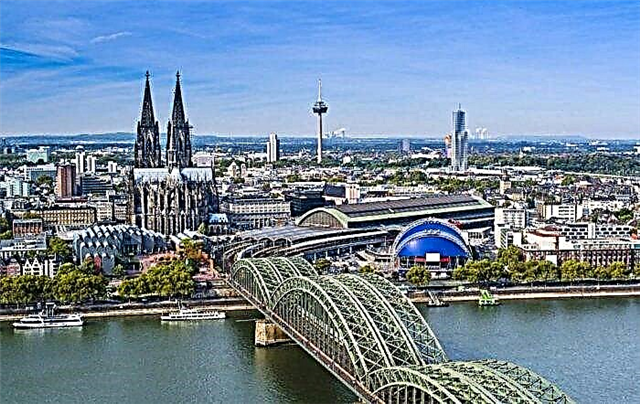
Frankfurt am Main
One of the centers of culture, tourism and business, as well as an important transport hub in Germany and Europe. The modern architecture of the business districts is harmoniously combined with the traditional look of the houses of the German bourgeoisie. The historical quarter Alt-Sachsenhausen with its Saxon-style villas and the Museum Embankment deserve the attention of a tourist. You should also visit the Altstadt area to see the half-timbered structures.
Population - 746 878 people (2017)

Stuttgart
It is this green and beautiful city that is home to the Porsche and Mercedes car brands. Stuttgart also became famous as the musical capital of Germany thanks to the International Academy of J.S.Bach, where students from all over the world come to study. There are an incredible number of gardens and parks where locals love to spend their time. Some of the most picturesque are the botanical garden with 5 thousand plant species and Wilhelm's park.
Population - 632 743 people (2017)

Dusseldorf
A modern metropolis, the economic and political center of the country, where the offices of many world corporations are located. It is famous for its first-class hotels, restaurants and a large number of boutiques of world brands, giving the opportunity to immerse yourself in shopping. Also, guests of the city are attracted by breweries, which prepare a foamy drink according to traditional recipes. Lovers of architecture will find the city center of Altstadt, where historical buildings are concentrated, interesting.
Population - 617 280 people (2017)

Essen
The fame of the main industrial center of Germany does not prevent Essen from being an attractive tourist destination and attracting travelers from different countries. Here are the Zollverein mine - a masterpiece of industrial architecture, the Falkwang Museum, the old Romanesque Abbey of Verdun, and the Huguenpot Castle. While walking through the Kettwig district, you can admire the half-timbered facades of the houses.
Population - 590 194 people (2017)
Hotels on Booking.com: Essen

Dortmund
Another industrial center of the Ruhr area, which flourished in coal mining and manufacturing. Dortmund can be called a rebel from the ruins, because during the war it was almost destroyed to the ground. Almost all of the city's sights were re-created in the 1950s, but it is very difficult to distinguish them from the original buildings - the restorers did their best.
Population - 587 010 people (2018)

Leipzig
A city in Saxony, which is rightly called the fairground due to the large number of street markets where everything in the world is traded. The most famous ones are the Christmas Weinachtsmarkt, the weekend food market on Bonaischestraße and the Antique Trudelmarkt antiques market. Moreover, the famous Leipzig Fair has been held here since the 12th century. In the church of St. The boys' choir performs in the form, led by I. Bach for 27 years.
Population - 582 285 people (2018)
Hotels on Booking.com: Leipzig

Bremen
The well-known fairy tale "The Bremen Town Musicians" is associated with the city. In honor of the heroes of this famous work, a monument was erected on the Marktplatz in the 1950s. At one time, Bremen played an important role in the adoption of Christianity by the population of Northern Europe. In the 14th century, it became the most influential city of the Hanseatic League. Unfortunately, during the war, most of the historic buildings were destroyed.
Population - 569 814 people (2019)
Hotels on Booking.com: Bremen
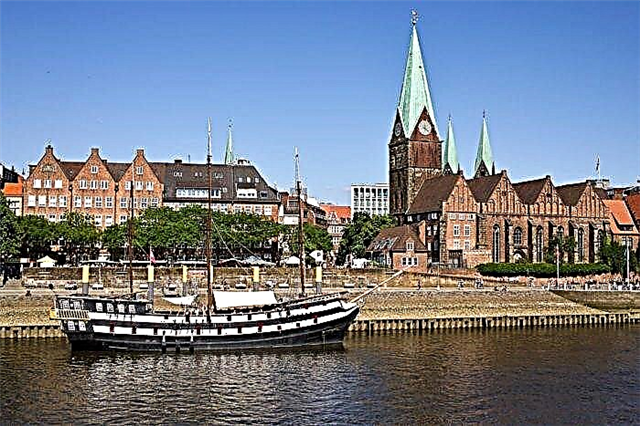
Dresden
A city on the Elbe, famous for its baroque architecture, grandiose bridges and museums, among which the Dresden Art Gallery should be noted. This art collection is considered one of the largest and most distinguished in the world. Of no less interest are the castles located in the city itself and its environs: Albrechtsberg, Ekberg, Ligneraschloss, Moritzburg and Pilnitz.
Population - 554 434 people (2019)
Hotels on Booking.com: Dresden
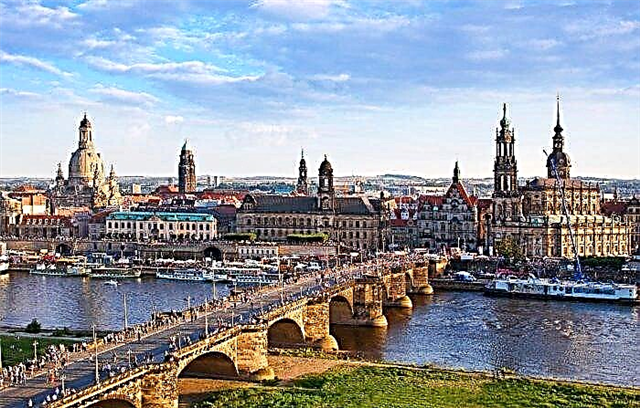
Hanover
The popularity of the city has brought numerous industrial exhibitions and fairs, which have been held annually since 1947. For tourists in Hannover, a specially developed route "Red Thread", passing through the main architectural monuments and the most beautiful places. Many visitors to the city head to the Hanover Zoo, where more than 3 thousand animals live, or for a walk in the picturesque Herrenhausen gardens, created in imitation of Versailles.
Population - 535,061 people (2017)

Nuremberg
The second largest city in Bavaria, which has the popular nickname "the treasury of the German Empire." In past centuries, it was the seat of German monarchs, in the 19th century it became the center of the industrial revolution. In the 1940s, bombing raids left the city in ruins. The famous Nuremberg trials of the former leaders of the Third Reich took place here. As a result of long and careful reconstruction, many buildings have been restored.
Population - 515 201 people (2017)
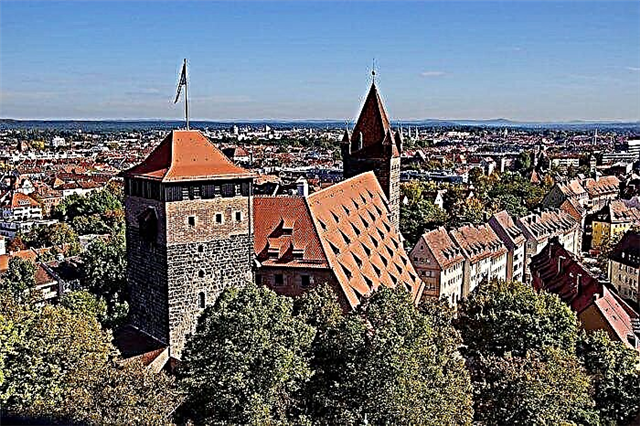
Munster
A city on the border with the Netherlands, founded in the distant VIII century. On its territory are the sights of the Middle Ages: the Münster Bishopric, the Gothic Town Hall, the Church of St. Lambert.Also, tourists will be interested in visiting the Westphalian State Museum of Art and Culture, the local Pinkus Müller brewery and the city zoo.
Population - 313 559 people (2019)
Hotels on Booking.com: Muenster

Augsburg
An ancient Swabian city in the foothills of the Alps, which emerged on the site of a Roman settlement. Its appearance harmoniously complements the pastoral landscapes of Bavaria. A walk in Augsburg should start from the Maximilianstrasse, then walk to the main square to admire the Perlachturm tower and the town hall. Another iconic landmark is the Cathedral of the Virgin Mary, built in the 14th century.
Population - 292 851 people (2018)

Freiburg
The alleged homeland of the humanist Erasmus of Rotterdam and the place where the Black Forest cherry cake recipe was invented. Students from all over the world study in Freiburg, thanks to them a special atmosphere of eternal youth, enthusiasm and desire for knowledge soars in the city. Looking at this prosperous place, inhabited by wealthy Germans, it is difficult to imagine that in the past it has experienced many bloody wars.
Population - 230 241 people (2019)

Lubeck
Port on the Baltic Sea, which arose in the XII century on the site of the destroyed settlement of the Slavs. The oldest part of the city was destroyed during the war, but later rebuilt in detail. Today it looks the same as in the Middle Ages. The most striking sights of Lübeck are the 14th century cathedral, the 13th century town hall and the Budenbrock house.
Population - 217 198 people (2018)
Hotels on Booking.com: Lubeck

Erfurt
During the Middle Ages, the city was an important center of trade. Today it harmoniously combines ancient architecture, picturesque parks, cozy streets and modern buildings. In the city center, on Domplatz square, there is an old cathedral built in the German Gothic style, nearby are the Petersberg fortress and an observation deck from where you can admire the panorama of Erfurt.
Population - 212 988 people (2017)
Hotels on Booking.com: Erfurt

Sprout
In the past, Rostock was a member of the Hanseatic League, today it is the center of shipbuilding and industry. The districts of the Old Town, where the Nikolaysirche, Petrikirche and the Market Square are located, as well as the territory of the Middle Town with the town hall of the XIV century, are of tourist interest. Many attractions, restaurants and shops can be found along the Kröpeliner Straße pedestrian street.
Population - 208 886 people (2018)
Hotels on Booking.com: Rostock

Potsdam
In the 18th century, Potsdam became the seat of the Prussian kings. The most significant architectural monuments of the city belong to this period. Here is the grandiose ensemble of Sanssouci, founded under Frederick the Great. Another iconic landmark is Lake Heiliger See with the Cecilienhof Palace. In the old quarters of the city, there are baroque mansions and houses built for Dutch artisans.
Population - 178 347 people (2018)
Hotels on Booking.com: Potsdam
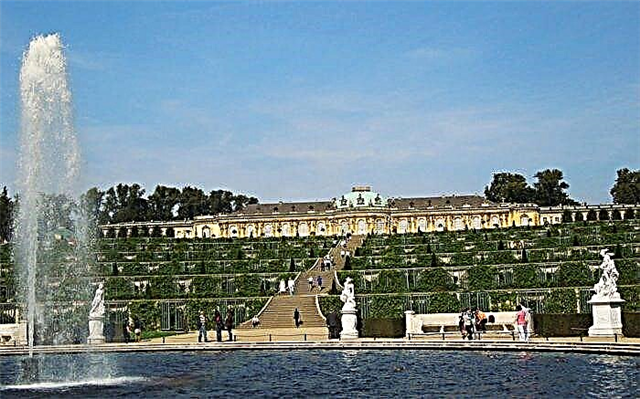
Heidelberg
For the first time the city was mentioned in the sources of the XIII century. Unlike many other places, Heidelberg was not damaged during the Second World War and its historical heritage remained intact. Today, tourists can enjoy strolling through the ancient Hauptstrasse, admire the architecture of Heidelberg Castle and visit the university, whose Baroque facades adorn the Altstadt.
Population - 160 601 people (2017)

Regensburg
An ancient city located at the confluence of the Regen and Danube rivers, once the residence of the dukes of Bavaria. The main decoration of Regensburg is the Gothic cathedral. Also of interest are the arched stone bridge of the 12th century in the ancient Roman style and the town hall, built in the 13th-15th centuries. Today, the building houses a torture museum. The small sausage shop next to the bridge, where meat sausages have been cooked for over 800 years, should not be overlooked either.
Population - 150 894 people (2017)

Trier
In 1986, UNESCO included Trier in the World Heritage List, taking under protection numerous architectural monuments of the Roman era and the Middle Ages. The city has mixed several cultures, as it is located close to the border with France and very close to Luxembourg. Another interesting fact is that the notorious Karl Marx was born in Trier and spent the first 17 years of his life.
Population - 110,013 people (2017)
Hotels on Booking.com: Trier

Schwerin
In the XII-XVII centuries, Schwerin was the seat of the Dukes of Mecklenburg-Schwerin and the capital of the lands that belonged to them. Perhaps the most outstanding landmark of the city is the grandiose castle, built in the 19th century in a mixture of Gothic, Baroque, Byzantine and Classicism. Schwerin has many parks and gardens, museums with old and modern collections, beautiful churches.
Population - 95 818 people (2018)
Hotels on Booking.com: Schwerin

Bamberg
Due to the fact that Bamberg is located on seven hills, it was nicknamed the German Rome. This city has a rich historical and architectural heritage. It was not destroyed during the Second World War, so today it can please travelers with interesting tourist routes. The city's cathedral was built in the 11th century, the old town hall appeared in the 14th century, the Bishops' Castle is a masterpiece of the brilliant Baroque era.
Population - 77 179 people (2017)
Hotels on Booking.com: Bamberg

Baden Baden
Thanks to its thermal springs, Baden-Baden has long been famous throughout Europe. Their healing properties were known to the ancient Romans, today tourists come to the city for rest and treatment. Thanks to this, a resort atmosphere reigns here: people walk in well-groomed parks, attend concerts and theaters, go to casinos and chic shops. Baden-Baden has two famous thermal baths: Caracalla and Friedrichsbad.
Population - 54 718 people (2017)

Passau
A small old town in Lower Bavaria. A fifth of Passau's residents are students of the local religious university, whose history goes back to the 17th century. The settlement was founded by Celtic tribes, for more than a thousand years it was part of the Holy Roman Empire. Passau is compared to Venice, as it is located at the confluence of three rivers. The streets of the city are lined with picturesque 18th century Baroque mansions.
Population - 51 781 (2017)
Hotels on Booking.com: Passau

Quedlinburg
In the 10th century, an abbey was erected on Mount Schlossberg, which later began the history of the city. The monastery has survived to this day. The historic center is included in the UNESCO World Heritage List due to the fact that it has been perfectly preserved since the Middle Ages. Some of Quedlinburg's traditional half-timbered buildings are over 600 years old - and there are dozens of them.
Population - 24 216 people (2017)

Rothenburg an der Tauber
A picturesque Bavarian city that has almost completely survived in its original form. There are almost no modern buildings, high-rise buildings and neon signs here - the authorities carefully take care of preserving the medieval look and atmosphere. Rothenburg an der Tauber consists of picturesque half-timbered houses, cobbled streets, small squares and red-tiled roofs.
Population - 11 106 people (2017)
